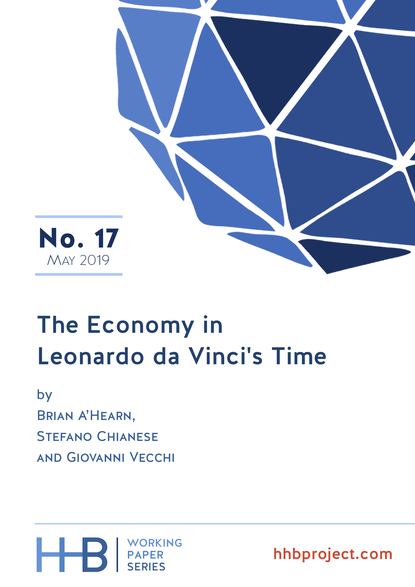Title:
The Economy in Leonardo da Vinci’s Time
Author(s): Brian A'Hearn, Stefano Chianese, Giovanni Vecchi
Year: 2019
No: 17
JEL Classification: D63, I30, N01, N33
Pages: 16
Abstract:
This paper presents the main economic features, in quantitative terms, of the society in which Leonardo Da Vinci lived from the second half of the 15th century to the early 16th century. Using data from Florence’s Land Register of 1427 combined with new data on the household budgets of Leonardo and of his family, the paper proposes two hypotheses. The first regards the importance of the demand for goods linked to art and culture. The city’s economic élite managed to appropriate about two thirds of the economy’s surplus for itself (i.e. what was left after the population had been guaranteed a minimum level of subsistence) and it showed a growing demand for luxury goods that permitted and incentivized the work of talented individuals of the time. In this context, Leonardo’s genius fell on fertile ground. The second hypothesis regards pre-industrial social mobility (upward mobility in particular): Leonardo’s household accounts support the theory that the economic fluidity of renaissance Florence may have been considerably greater than the literature on economic history would have us believe.
![]() Keywords: economic inequality, Florence, household budgets, living standards, Reinassance, social mobility, Tuscany
Keywords: economic inequality, Florence, household budgets, living standards, Reinassance, social mobility, Tuscany

